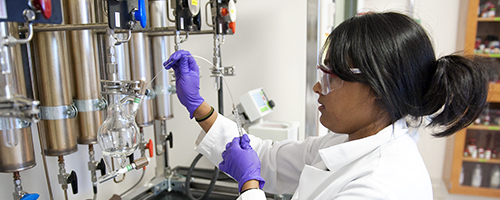The evolution of function in strictosidine synthase-like proteins
This document has been relocated to https://scholarworks.smith.edu/chm_facpubs/57/
Abstract
The exponential growth of sequence data provides abundant information for the discovery of new enzyme reactions. Correctly annotating the functions of highly diverse proteins can be difficult, however, hindering use of this information. Global analysis of large superfamilies of related proteins is a powerful strategy for understanding the evolution of reactions by identifying catalytic commonalities and differences in reaction and substrate specificity, even when only a few members have been biochemically or structurally characterized. A comparison of >2500 sequences sharing the six-bladed β-propeller fold establishes sequence, structural, and functional links among the three subgroups of the functionally diverse N6P superfamily: the arylesterase-like and senescence marker protein-30/gluconolactonase/luciferin-regenerating enzyme-like (SGL) subgroups, representing enzymes that catalyze lactonase and related hydrolytic reactions, and the so-called strictosidine synthase-like (SSL) subgroup. Metal-coordinating residues were identified as broadly conserved in the active sites of all three subgroups except for a few proteins from the SSL subgroup, which have been experimentally determined to catalyze the quite different strictosidine synthase (SS) reaction, a metal-independent condensation reaction. Despite these differences, comparison of conserved catalytic features of the arylesterase-like and SGL enzymes with the SSs identified similar structural and mechanistic attributes between the hydrolytic reactions catalyzed by the former and the condensation reaction catalyzed by SS. The results also suggest that despite their annotations, the great majority of these >500 SSL sequences do not catalyze the SS reaction; rather, they likely catalyze hydrolytic reactions typical of the other two subgroups instead. This prediction was confirmed experimentally for one of these proteins. © 2011 Wiley-Liss, Inc.

